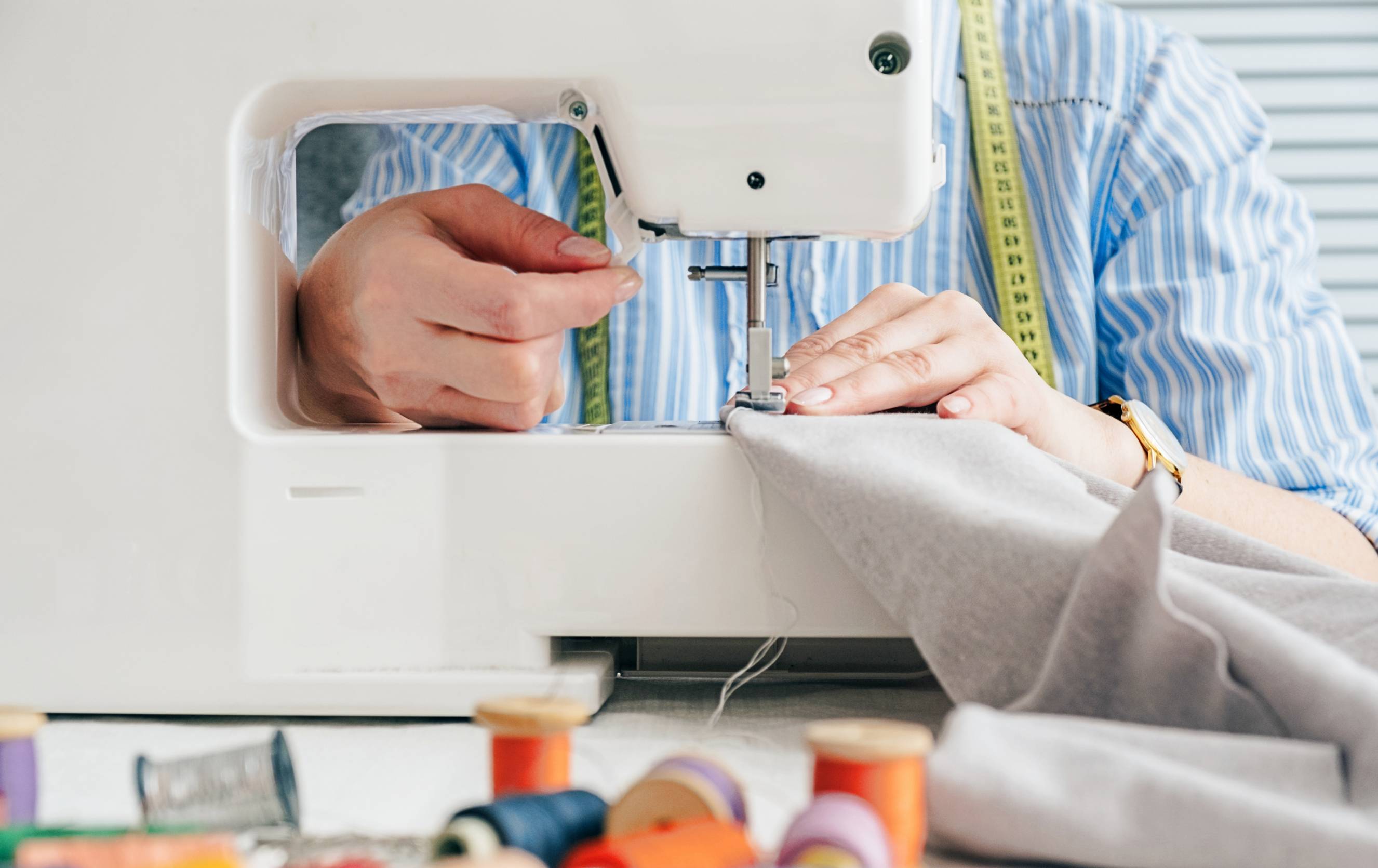
The sew-crets to success: How to make money sewing in the UK
Exploring how to turn sewing into an income stream
Published on

Written by Ana K.
Contributor
Read more about our contributor
Key Facts
Sewing services have been gaining popularity due to a shift in consumer behaviour—more people are opting to purchase eco-friendly, handmade, and custom products.
To start a sewing venture, you must have the right skills and tools, business acumen, a customer-oriented mindset, and marketing know-how.
You can offer alterations and repairs, clothes and home textiles, fabric handicrafts, and sewing lessons, pricing them based on several factors and the right price model.
Looking for an extra job on the side? If you know how to sew, you not only have a practical life skill; you also have a viable moneymaking opportunity in your hands.
If you are planning to turn this hobby into a new source of income, this guide on how to make money sewing discusses the ins and outs of having a sewing business in the UK.
What to know about the UK sewing industry
Can you make money sewing at home? If this is a question that you’ve been asking yourself for some time, let the following sections show you how it’s still a possible income source:
Trends in the sewing industry
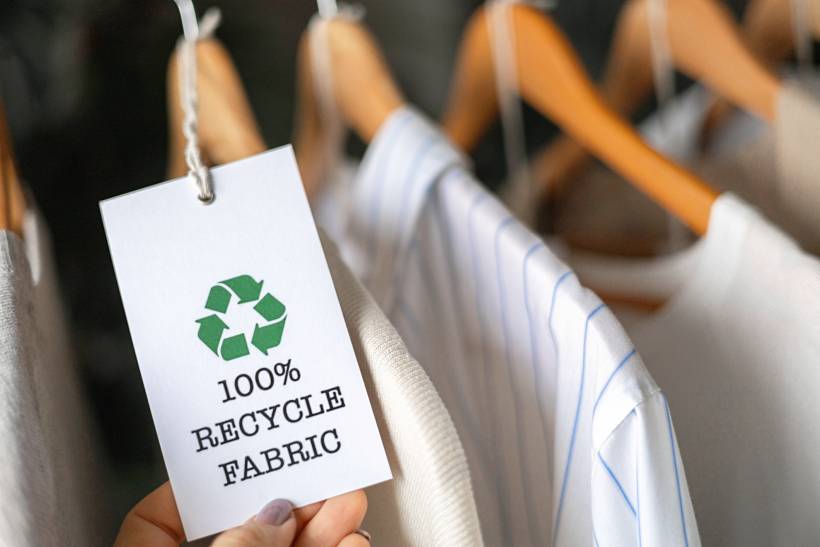 Clothing made from recycled fabric showcased on wooden hangers (Source: iStock)
Clothing made from recycled fabric showcased on wooden hangers (Source: iStock)
Sustainable and zero-waste fashion
Sustainable clothing and zero-waste fashion continue to gain ground after seeing a boost during the COVID-19 pandemic; many consumers have become aware of how their goods are produced and have decided to prioritise locally made and eco-friendly products, as well as upcycling and repurposing.
High demand for alterations
Along with consciously choosing sustainable and slow fashion, many are opting to alter or repair their old clothes instead of discarding them. With thrifting becoming a trendy way to consume fashion, people have also been turning to tailors to give their clothes a better fit.
Custom and handmade goods
One of the ways to make money by sewing is by catering to a market segment that has been steadily growing—those seeking personalised and handmade fabric-based clothing and gifts, especially around key holidays and seasonal events.
Teaching and workshops
DIY-ing has become popular as of late, with sewing videos on platforms like TikTok amassing millions of views from users. This trend has been encouraging more people—especially young social media users—to learn this basic life skill on their own or through classes and workshops.
Seasonal income patterns
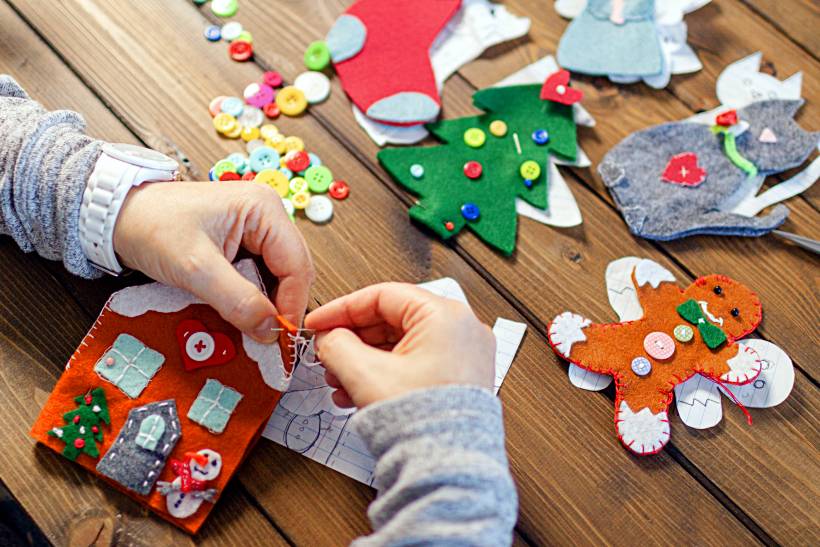 Handmade felt ornaments being crafted for holiday decorations (Source: iStock)
Handmade felt ornaments being crafted for holiday decorations (Source: iStock)
Q4 surge
Sewing-related gigs, including fabric work and knitting, continue to grow year over year, with October to December being opportune months for service providers as people purchase gifts and holiday outfits.
Post-holiday adjustments
The first three months of the year are a promising time to earn from sewing-related services, including crafting, knitting, and needlecraft; during this period, people start to get busy with home decor changes, post-holiday restocking, and events like Valentine’s Day.
Airtasker personally experienced this first-quarter demand in 2025. In particular, February saw a gross marketplace volume of £174.90 and a total of six posted tasks.
Sewing-related services also saw a year-on-year increase: from four posted tasks in 2023 to 11 in 2024. This rise, which suggests an upward trend that continues to be sustained throughout 2025, shows how more individuals are utilising Airtasker to reach out to service providers.
What you need to start earning money sewing
Establishing a sewing business from the ground up—especially as a one-person venture—means juggling different roles, acquiring the necessary tools, and abiding by all legal requirements.
Essential skills for a successful sewing business
 Creating a sewing pattern with precision tools in a home tailoring setup (Source: iStock)
Creating a sewing pattern with precision tools in a home tailoring setup (Source: iStock)
Technical proficiency
To be able to make money from sewing, one should have a strong grasp of fundamental and advanced sewing skills. These include measuring, drafting sewing patterns, cutting fabrics, stitching by hand or using a machine, doing various types of seams, and embroidering designs.
Attention to detail
One should have a sharp eye for detail, especially when engaging in sewing projects that require a high level of meticulousness, like when creating tailored-fit garments and adding intricate patterns to a dress. It is also important to have the ability to use various measuring tools, such as a sewing gauge, French curve, and measuring tape.
Creativity and design skills
Sewing crafts that make money is a good idea if you can make practical and decorative items that do not look like other products available in the market. Creativity is also necessary if you want to be able to adapt designs based on your customers’ specifications.
Customer service
Building client trust by consistently delivering high-quality items on time and being responsive to queries and other matters is a must if you want your business to grow its customer base.
Business and time management
The business side of a creative venture is something many people struggle with. But knowing how to make money with sewing also means taking the time to learn about handling the budget, managing expenses, working on marketing initiatives, scheduling appointments and deliveries, and communicating with customers.
Sewing tools and equipment to invest in
 A tidy sewing setup with essential tools and a touch of greenery (Source: iStock)
A tidy sewing setup with essential tools and a touch of greenery (Source: iStock)
Basic sewing machine
Identifying the type of equipment you need is part of the process if you want to make money with a sewing machine. Planning to sell simple crafts or everyday clothes? A basic sewing machine would likely suffice. But if you see yourself mostly handling difficult fabrics (such as denim or leather) or working on specialised stitching projects (like quilting or embroidery), an advanced sewing machine is probably the right pick.
Sewing kit essentials
A sewing business should stock its sewing kit with tools and notions like scissors and fabric shears, hand-sewing and machine needles, threads, a measuring tape, pins, and a pin cushion. An iron and ironing board are also necessary to keep stitches accurately placed.
Workspace setup
Do not discount how a comfy and clean workspace with a solid desk, good lighting, adequate space, and storage options for your fabrics and tools can boost your creativity and productivity.
Specialised tools
A tailor’s clapper, presser feet, magnetic seam guides, and a pressing ham are some specialised tools that can elevate your sewing game and spell the difference between a rough-looking project and a polished product.
Certifications or permits
Before you can operate a sewing business in the UK, you must determine which business structure suits your situation and get the corresponding permits and certifications. If you intend on making money sewing at home on your own, you’ll need to register as a sole trader. You must also apply for a National Insurance number and obtain permission from your landlord or mortgage provider, among other obligations.
What you can offer as a sewer or seamstress
Upon deciding to start a sewing business, one of the first questions you’ll probably ask yourself is, ‘What can I sew to make money?’ The good thing about this venture is that it presents countless options in terms of the products and services you can provide. Here are some sewing projects that make money to help you have an idea of what to offer or to narrow down your choices:
Clothing alterations and repairs
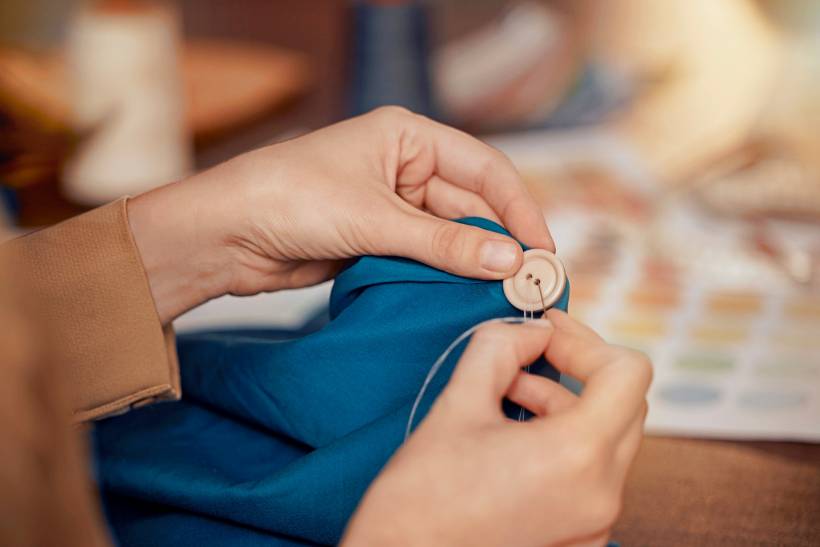 Detailed view of sewing a button onto fabric by hand (Source: iStock)
Detailed view of sewing a button onto fabric by hand (Source: iStock)
Alteration services range from cinching a skirt’s waistline and hemming a pair of chino or khaki pants to adjusting the sleeve length and letting out seams. Meanwhile, repairs may involve replacing missing coat buttons, changing a broken zipper, and patching holes.
Custom clothing
Advanced sewers with the right skills and experience have the option to focus on complex projects that involve tailored fittings and other customisations. These include bespoke suits and made-to-order gowns.
Home textiles
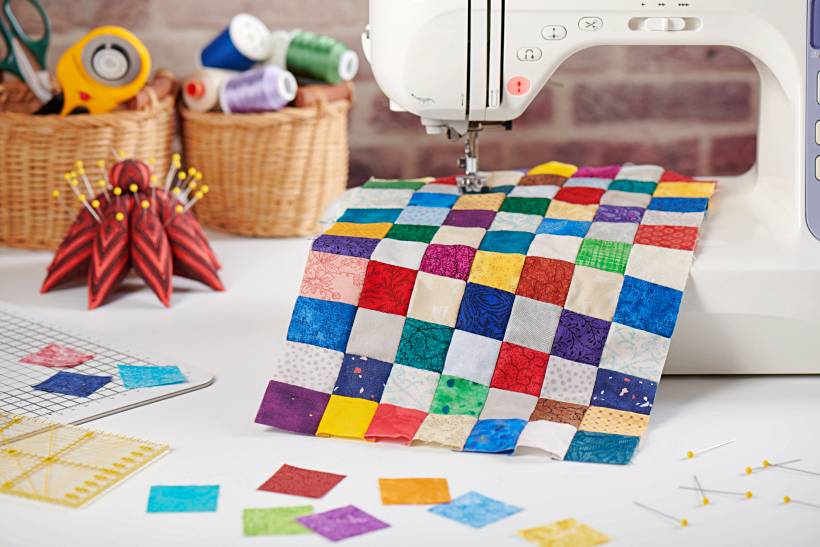 A colourful patchwork quilt in progress under a sewing machine (Source: iStock)
A colourful patchwork quilt in progress under a sewing machine (Source: iStock)
Cushion covers, curtains, blankets, beddings, aprons, dishcloths, and table runners—there’s no shortage of home accessories and textiles you can make if you want a sewing business geared towards homemakers and property owners.
Upcycling and eco-friendly sewing
With the rise of sustainable and zero-waste fashion, it’s easy to find sewing ideas to make money from home by looking at the items you no longer need. You can turn a pair of skinny jeans into a tote bag, assemble a quilt out of worn-out blouses, and make a dress using an old button-down shirt.
Sewing lessons and workshops
 Group project in progress at a textile or fashion workshop (Source: iStock)
Group project in progress at a textile or fashion workshop (Source: iStock)
If you have a knack for teaching and want others to learn how to sew, you can set up regular sewing classes through your community centre, in your local church, or even at home. You can also organise one-day workshops on the basics of sewing or pattern making if teaching is something that you’d want to do once in a while.
Niche products
You can zone in on a niche market by making products not offered by most businesses, such as reusable sanitary underwear and makeup-removing pads, book covers and bookmarks, kids’ clothing, Halloween costumes, or pet clothes and leashes. You can also go with something in line with your interests. For instance, if you are into anime, video games, and superhero movies, maybe making custom cosplay costumes is right up your alley.
How to price your sewing services
Part of learning how to make money from sewing in the UK is calculating your potential profit and pricing your goods or services based on a variety of factors.
Factors to consider
 Creative workspace setup with a seamstress working on clothing concepts (Source: iStock)
Creative workspace setup with a seamstress working on clothing concepts (Source: iStock)
Experience and expertise
Those with years of relevant experience have earned the right to charge more compared to newbies in the sewing business. This is because with experience comes expertise, and this translates to having better workmanship and practice at adapting one’s work to client specifications.
Complexity of the service
There are more skills and labour time involved when working on elabourate sewing jobs, like a beaded gown or a three-piece suit. This means they would cost more compared to relatively easy sewing projects, such as a neckline adjustment or other simple alterations.
Material costs
Any materials you use when sewing, such as fabrics, hardware, and threads, can add to the total cost if you’re the one supplying them instead of your client. For the same reason, pricier materials (e.g., premium linen vs. cotton, YKK zippers vs. regular ones) can result in more expensive products.
Location and demand
Location-related costs, including rent, transportation, and electricity, can affect your total expenses and should therefore be factored in when figuring out pricing. If you are in an urban area, there is also likely to be a higher demand, allowing you to charge more for your products or services. Additionally, seasonal trends and needs can dictate demand and, hence, pricing.
Rush orders
Last-minute orders and quick turnaround times usually demand an additional fee, which can range from 30% to 100% of the standard cost. In some cases, there’s also an extra charge that covers delivery.
Common pricing models
The kind of sewing-related product or service you’ll be providing typically dictates the pricing strategy that you should follow.
Hourly rate
Hourly billing is apt for services that can take too long or require multiple appointments, such as creating custom outfits. This pricing model ensures that you get paid for every hour that you’re working on a job. However, it can be hard to give a client a cost estimate if you are dealing with a particular project for the first time.
Flat fee per project
You can offer a flat or fixed rate if you already know upfront how much time a project will require and how much it will cost. For instance, you can have a flat fee structure for simple repairs or alterations.
Packages
You can offer promos and discounts for bundled products or services. Some examples are a ‘buy 2, get 1’ scheme for handsewn fabric pouches and 10% off for signing up for all sewing classes in a workshop series.
Profit margin calculations
 Calculating sewing expenses and profits (Source: iStock)
Calculating sewing expenses and profits (Source: iStock)
You can calculate your profit margins by subtracting your expenses from your revenue:
Profit = Revenue - Expenses
If you don’t want your profit margin to be in the negative, make sure that the revenue you get from your clients is higher than your expenses, which include material costs, hours spent working, tax, and other variables (e.g., transportation costs).
How to reach those who need sewing services
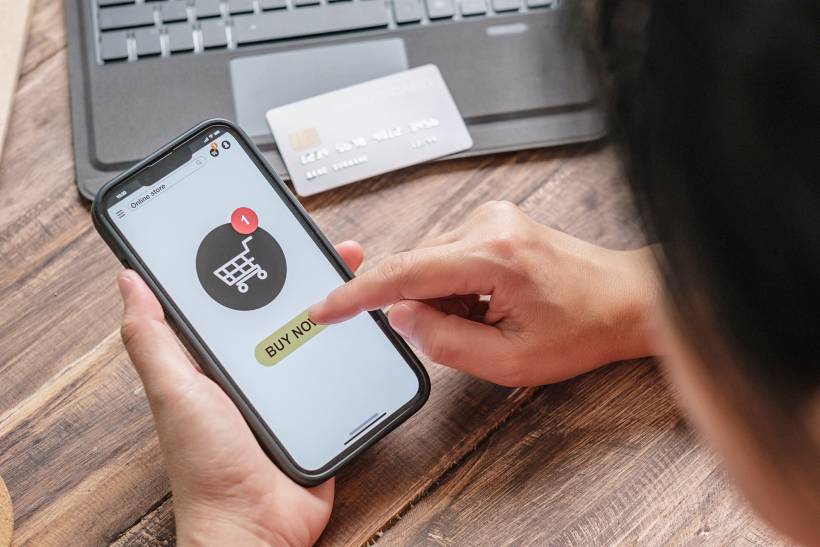 Digital checkout process using a mobile device (Source: iStock)
Digital checkout process using a mobile device (Source: iStock)
Part of learning how to make money by sewing is knowing how to connect with your target market. Fortunately, reaching out to potential consumers has become easier with the help of social media and other online platforms. Still, traditional marketing strategies shouldn’t be discounted, especially if you want your business to be community-focused.
Online
Be active on social media: Many businesses have found their audience by creating profiles on visual-focused social media sites, such as Pinterest and Instagram. These can be ideal platforms for showcasing your work and process.
Sell on online marketplaces: It is also wise to promote and sell your products and services on different online marketplaces. You can have a Big Cartel or Etsy shop for a fee.
Have a website: You can have your own online store through platforms like Shopify and WordPress, enabling direct orders and enquiries from your customers. You can also use your own website to display your offerings, client reviews, and your contact information.
Join local groups: Online community groups centred on sewing and related hobbies, like those found on Facebook, are also tools that allow you to personally message or reach out to potential customers.
Offline
Place flyers: You can give out flyers and leaflets in various places within your community, including the local library, sewing supplies stores, and trade shows. Just make sure to obtain permission before doing so.
Build a network: Participating in craft fairs and local markets, sponsoring events with other small businesses, and joining nonprofit initiatives are good ways to build a network.
Aim for word-of-mouth marketing: A high-quality product can work as an ad on its own once happy customers relay their satisfaction to family and friends.
Partner with tailors or stores: You can build partnerships with other service providers, such as local tailors or seamstresses, fabric and craft stores, and dry cleaners, through complementary discounts and referral systems.
Turn your sewing skills into an income stream on Airtasker
 Sewing in progress at a stylish and organised fashion design studio (Source: iStock)
Sewing in progress at a stylish and organised fashion design studio (Source: iStock)
Want to start earning through sewing? Airtasker is an online platform where you can easily connect with individuals looking for professional sewers who can create garments and other items, handle simple and complex alterations, and bring life to damaged clothing.
The process involves signing up on the platform, posting the tasks you are capable of, reviewing and accepting offers from prospective clients, and getting the job done.
Learn more about our contributors

Written by Ana K.
Contributor
Ana always puts a premium on accuracy, clarity, and style when writing—a practice that her English degree has instilled in her. She excels at covering topics related to pet care, home and interior design, and food, which count among her varied interests. She also enjoys nature and street photography, as well as travelling. Overall, Ana uses her love for research to engage Airtasker readers with fun, practical content.
FAQs on earning money sewing
Although challenging, it’s still possible to start a home sewing business with no professional experience as long as you make thorough preparations. These involve conducting industry research, refining your sewing skills, networking and marketing, and seeking help if you need to.
You can find sewing apprenticeships and mentorships through technical or training schools, government-initiated programmes, and local tailors or seamstresses who are willing to take someone under their wing.
Challenges like not meeting client expectations, beating deadlines, and being up-to-date with new tech and practices can be managed through open and constant communication, scheduling tools, and upskilling.
To estimate how long a sewing project will take, you can research the average completion time for it and make adjustments based on your experience.
Create your profile and start browsing jobs in minutes
Start earning now
Related articles


